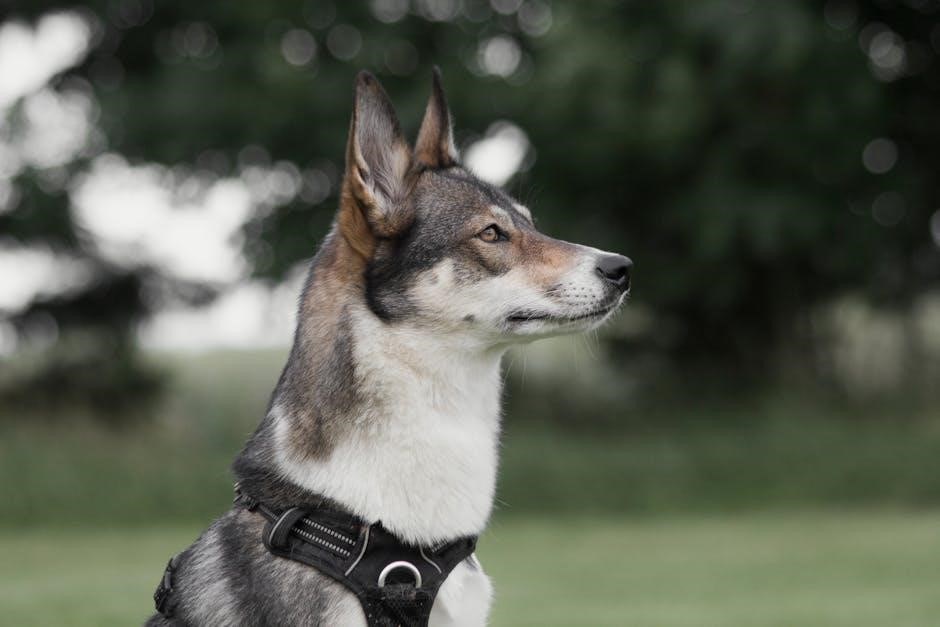Dog harnesses are popular tools for walking and controlling dogs, offering better control and comfort compared to traditional collars, making them ideal for various breeds and sizes.
1.1 What is a Dog Harness?
A dog harness is a wearable device designed to securely and comfortably fit around a dog’s torso, distributing force across the chest and shoulders; Unlike collars, harnesses reduce neck strain, making them ideal for dogs that pull or have respiratory issues. Typically made of nylon, polyester, or leather, harnesses feature adjustable straps and clip-in points for leashes. They provide better control during walks and are especially beneficial for energetic or larger breeds, promoting comfort and safety for both the dog and owner.
1.2 Importance of Using a Dog Harness
A dog harness provides better control and reduces strain on your dog’s neck, making it safer and more comfortable for walks. It distributes force across the chest and shoulders, ideal for dogs that pull or have neck sensitivities. Harnesses also prevent choking hazards and are especially beneficial for breeds prone to respiratory issues. They offer enhanced safety and control, ensuring a more enjoyable walking experience for both you and your dog while promoting overall well-being.
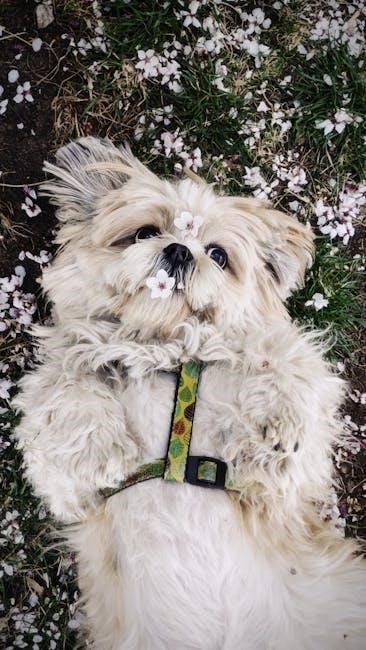
Types of Dog Harnesses
Dog harnesses come in various styles, each designed for specific needs, offering comfort, control, and versatility for different activities and dog behaviors, ensuring a perfect fit for every pup.
2.1 Front-Clip Harnesses
Front-clip harnesses feature a D-ring on the chest plate, allowing owners to attach the leash directly to the dog’s front. This design helps deter pulling behavior by steering the dog to the side when they pull. It’s particularly effective for strong pullers and provides better control during walks. Front-clip harnesses are comfortable and minimize strain on the dog’s neck, making them a popular choice for training and everyday use. They are ideal for dogs that need gentle guidance and are suitable for all sizes and breeds.
2.2 Back-Clip Harnesses
Back-clip harnesses have a D-ring located on the dog’s back, between the shoulder blades. They are ideal for well-trained dogs that don’t pull excessively, as they provide a comfortable walking experience without restricting movement. This type of harness is great for casual strolls and is often preferred by dog owners who want a hassle-free option. Back-clip harnesses are easy to put on and take off, making them a convenient choice for everyday use. They suit dogs of all sizes and breeds, offering both comfort and simplicity.
2.3 Dual-Clip Harnesses
Dual-clip harnesses offer the best of both worlds, featuring both front and back clips. This versatility allows owners to choose where to attach the leash, providing flexibility in training and walking situations. The front clip helps with steering and reducing pulling, while the back clip is suitable for relaxed walks. Dual-clip harnesses are ideal for dogs that pull occasionally or for owners who want options for different scenarios. They are durable, comfortable, and adaptable, making them a popular choice among dog owners.
2.4 No-Pull Harnesses
No-pull harnesses are specifically designed to discourage dogs from pulling on the leash. They work by redirecting the force of the pull across the dog’s chest or shoulders, making it uncomfortable for them to pull forward. These harnesses often feature adjustable straps and padded chests for comfort. They are ideal for strong or energetic dogs and can be a valuable tool for training. No-pull harnesses promote better walking behavior without causing harm or discomfort to the dog.
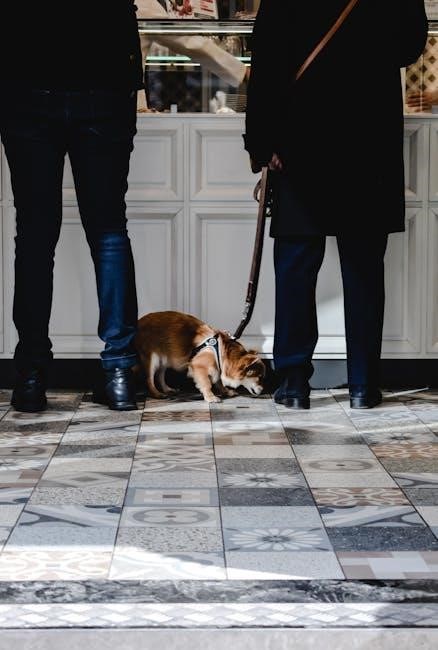
How to Choose the Right Harness for Your Dog
Selecting the right harness involves considering your dog’s size, breed, activity level, and comfort needs. Look for durable materials, adjustable straps, and features that match your dog’s lifestyle.
3.1 Consider Your Dog’s Size and Breed
Your dog’s size and breed are crucial when selecting a harness. Small breeds need lightweight, minimal designs, while larger breeds require sturdy, supportive structures. Certain breeds, like Bulldogs or Dachshunds, may need specialized harnesses to accommodate their unique body shapes. Always measure your dog accurately to ensure the harness fits properly, providing comfort and preventing strain. A well-fitting harness tailored to your dog’s size and breed ensures optimal comfort and safety during walks or activities. Proper fit is essential for all breeds to avoid discomfort or health issues.
3.2 Think About Your Dog’s Activity Level
If your dog is highly energetic or loves to run, choose a durable, breathable harness designed for active use. For calm or less energetic dogs, a simpler, lightweight option may suffice. Consider the frequency and duration of walks or activities to ensure the harness can withstand your dog’s lifestyle. Proper ventilation and padding are essential for high-energy breeds to prevent overheating and discomfort during prolonged exercises or adventures. Always prioritize durability and comfort based on your dog’s activity level.
3.3 Check the Material and Comfort
Opt for a harness made from breathable, soft materials like nylon or padded mesh for maximum comfort. Avoid harsh fabrics that may cause skin irritation. Look for cushioned chest plates and straps to distribute pressure evenly, reducing discomfort during walks. Ensure the harness is lightweight to prevent fatigue and has moisture-wicking properties to keep your dog cool. Comfortable materials are essential for extended wear, especially for dogs with sensitive skin or those prone to chafing. Always prioritize your dog’s comfort and skin health.
3.4 Look for Adjustable Features
Adjustable features are crucial for a customizable fit. Look for harnesses with multiple adjustment points, such as chest plates and shoulder straps, to ensure proper weight distribution. Adjustable straps allow you to tailor the harness to your dog’s unique body shape, preventing discomfort or restricted movement. A well-adjusted harness ensures your dog’s freedom of motion while maintaining control. This feature is especially important for growing puppies or dogs with seasonal coat changes that affect their size. Proper adjustability ensures comfort and safety.

How to Properly Fit a Dog Harness
Properly fitting a dog harness ensures comfort and safety. Measure your dog accurately, adjust straps to avoid tightness, and ensure freedom of movement for optimal comfort and control.
4.1 Measuring Your Dog for the Perfect Fit
Accurate measurements are crucial for a comfortable harness. Use a flexible tape measure around your dog’s chest, just behind the front legs, and across the widest part of the ribcage. For dogs with thick fur, consider the coat’s thickness to ensure the right size. Record the circumference carefully to avoid tightness or looseness. Proper measurements guarantee a secure, non-restrictive fit, preventing discomfort or the risk of your dog slipping out during walks.
4.2 Adjusting the Harness Straps
Adjusting the harness straps is essential for a comfortable and secure fit. Start by ensuring the chest plate sits snugly behind your dog’s front legs, then tighten or loosen the shoulder and belly straps as needed. Use the built-in buckles or slides to customize the fit, making sure the harness isn’t too tight or restrictive. Check regularly to ensure the straps haven’t shifted or loosened during wear. Proper adjustments prevent chafing and ensure your dog can move freely and comfortably.
4.3 Ensuring Comfort and Mobility
Ensuring your dog’s comfort and mobility is crucial when fitting a harness. Regularly check for any tight spots or rubbing, especially around the shoulders and chest. Opt for breathable, padded materials to prevent irritation. The harness should allow a full range of motion, especially for active dogs. If your dog shows signs of discomfort, such as pulling away or reluctance to move, adjust the fit immediately. A well-fitted harness promotes happy, stress-free walks and adventures.
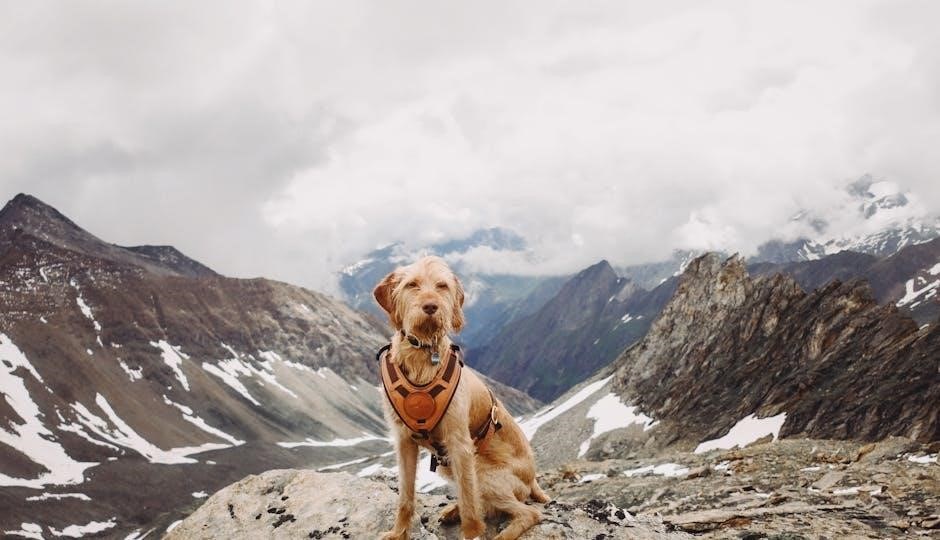
How to Train Your Dog to Wear a Harness
Training your dog to wear a harness involves patience and consistency. Start with short introductions, gradually increasing wear time while rewarding calm behavior to ensure a stress-free experience.
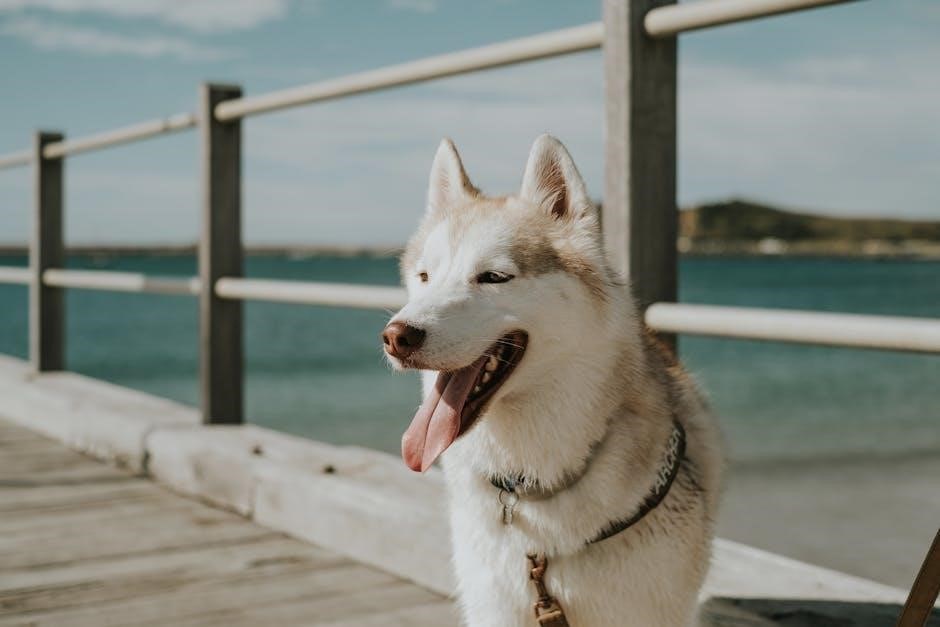
5.1 Introducing the Harness Gradually
Start by letting your dog see and smell the harness at their own pace. Place it near their favorite spot or during meal times to create a positive association. Gradually introduce the harness by letting them explore it without pressure. Reward curiosity with treats or praise to build confidence. Once comfortable, gently place the harness on your dog, allowing them to wear it indoors while supervised. Keep sessions short and fun to avoid overwhelming your pet.
5.2 Using Positive Reinforcement
Positive reinforcement is key to helping your dog accept the harness. Begin by offering treats and praise when your dog shows curiosity or calmness around the harness. Once they’re comfortable, reward them for wearing it indoors. Use high-value rewards to associate the harness with positive experiences. Consistency is crucial—always reward good behavior to build trust and confidence. Over time, your dog will view the harness as a natural part of their routine, making the process enjoyable for both of you.
5.3 Getting Your Dog Used to Walking with a Harness
Start by letting your dog wear the harness indoors while doing normal activities. Once comfortable, introduce short, fun walks around the house or yard. Reward calm behavior with treats and praise. Gradually increase walk duration and introduce new environments. Keep the leash loose to allow natural movement. Always ensure your dog’s comfort and confidence. Be patient, as some dogs may take time to adjust to the feeling of walking with a harness;
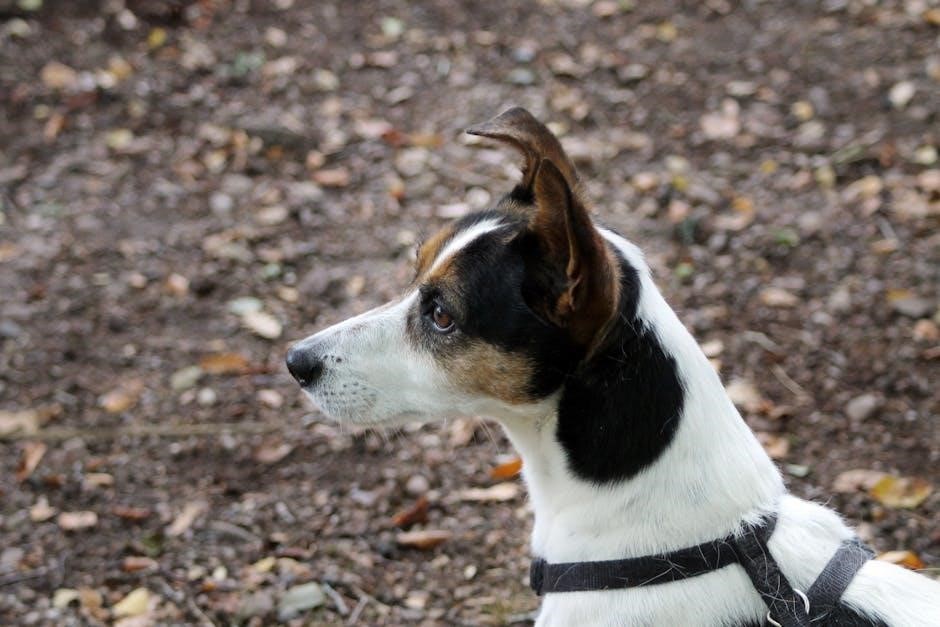
Safety Tips for Using a Dog Harness
Always monitor your dog while wearing a harness to prevent choking or escape; Avoid prolonged use and store it properly to maintain condition and ensure safety for future use.
6.1 Avoiding Choking Hazards
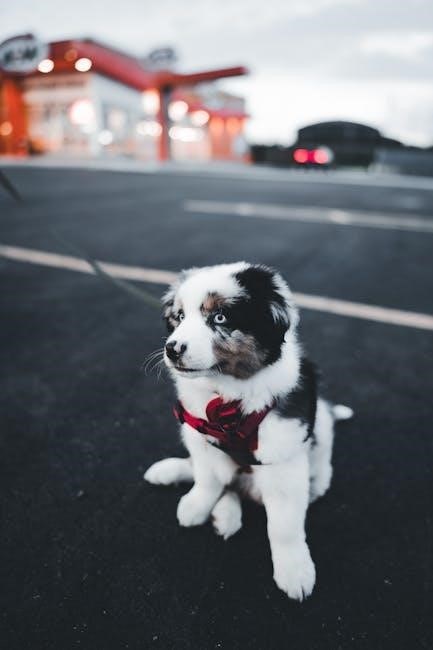
To prevent choking, ensure the harness fits properly and isn’t too tight. Avoid using harnesses with heavy hardware that could press on your dog’s neck. Always supervise your dog while they’re wearing the harness, especially in situations where they might get caught or tangled. Regularly inspect the harness for any damage or wear that could pose a risk. Proper fitting and careful use are key to keeping your dog safe and comfortable.
6.2 Monitoring Your Dog During Use
Always supervise your dog when they’re wearing a harness to ensure their safety and comfort. Watch for signs of discomfort, such as pulling away or heavy breathing, which may indicate the harness is too tight. Regularly check the fit, especially for growing puppies, and adjust as needed. Monitoring also helps prevent accidents, like the harness getting caught on objects. Proper supervision ensures your dog remains comfortable and secure during walks or playtime.
6.3 Storing the Harness Properly
Store the harness in a cool, dry place to prevent moisture buildup and damage. Clean it thoroughly before storage to remove dirt and odors. Avoid exposing it to direct sunlight, as this can cause fading or weakening of materials. Do not fold or crease the harness excessively, as this may damage the straps or hardware. Consider keeping it in its original packaging or a breathable bag to maintain its condition and extend its lifespan.
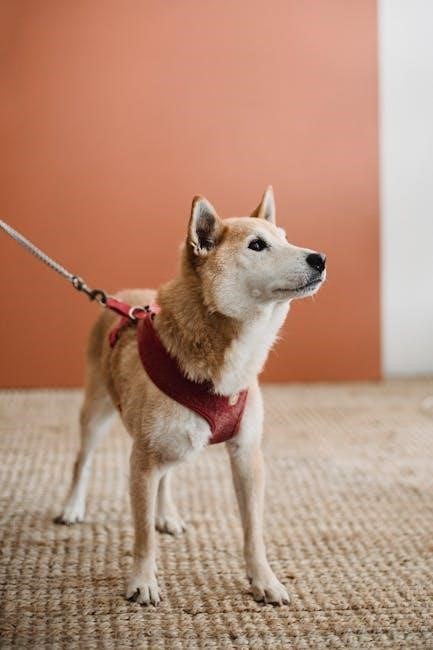
Common Mistakes to Avoid
Avoid common errors like improper fitting, ignoring size guidelines, and not monitoring wear and tear. These mistakes can compromise comfort, safety, and the harness’s durability over time.
7.1 Buying the Wrong Size
Buying a harness that doesn’t fit your dog properly is a common mistake. A harness that’s too tight can cause discomfort or even health issues, while one that’s too loose may not provide adequate control. Always measure your dog accurately and refer to size charts to ensure the best fit. Ignoring factors like your dog’s weight, breed, and body type can lead to poor functionality and an unhappy pet. Proper sizing is crucial for both comfort and effectiveness.
7.2 Not Adjusting the Harness Correctly
Not adjusting the harness correctly is another common mistake that can lead to discomfort or restricted movement for your dog. A poorly fitted harness can cause chafing, digging into the skin, or even limit your dog’s range of motion. Always take the time to tighten or loosen the straps as needed, ensuring a snug but comfortable fit. Proper adjustment ensures better control, prevents potential health issues, and makes walking more enjoyable for both you and your dog.
